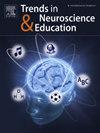Aerobic fitness modulates arithmetic strategy use in college-aged young adults
IF 3.4
Q2 NEUROSCIENCES
引用次数: 0
Abstract
Purpose
The purpose of the present investigation was to determine the extent to which individuals at the extremes of the aerobic fitness continuum differed in their utilization of arithmetic strategies.
Method
Using a cross-sectional design, 37 higher aerobically fit and 37 lower aerobically fit participants completed a complex arithmetic task while neuroelectric measures were concurrently recorded. The arithmetic task had participants view a pair of sequentially presented two-digit operands and determine if the sum was greater than or <100 which manipulated the utilization of exact and approximate arithmetic strategies.
Results
Individuals with higher aerobic fitness demonstrated a greater tendency to utilize more efficient approximate arithmetic strategies as the sums grew more distant from 100 in contrast to their lower aerobic fitness counterparts, indexed using a composite measure of behavioral and neuroelectric data.
Conclusion
Superior aerobic fitness relates to a greater ability to shift between procedural strategies for arithmetic problems.
有氧健身调节大学年龄年轻人的算术策略使用
目的本研究的目的是确定在有氧健身连续体的极端个体在算术策略的使用上的差异程度。方法采用横断面设计,选取37名有氧适能较高的和37名有氧适能较低的参与者完成一项复杂的算术任务,同时记录神经电测量。算术任务让参与者查看一对顺序呈现的两位数操作数,并确定总和是否大于或<;100,这操纵了精确和近似算术策略的使用。结果:与有氧适应度较低的个体相比,有氧适应度较高的个体表现出更大的倾向于使用更有效的近似算术策略,因为总和离100越远,使用行为和神经电数据的综合衡量指标。结论较好的有氧适能与较强的算术问题程序策略转换能力有关。
本文章由计算机程序翻译,如有差异,请以英文原文为准。
求助全文
约1分钟内获得全文
求助全文
来源期刊

Trends in Neuroscience and Education
NEUROSCIENCES-
CiteScore
6.30
自引率
6.10%
发文量
22
审稿时长
65 days
 求助内容:
求助内容: 应助结果提醒方式:
应助结果提醒方式:


